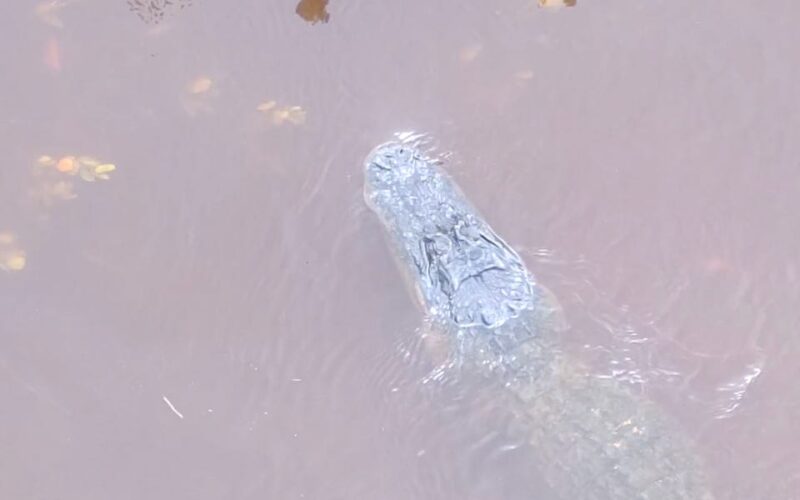- Hurricane Helene displaced alligators, turtles, and other wildlife in Florida.
- Large storms often move wildlife from their habitats due to flooding.
- Residents who see an alligator should give it space and call authorities if it poses a threat.
Florida’s alligators, turtles, and even sharks are finding themselves in new territory in the wake of Hurricane Helene.
On September 27, a Collier County Sheriff’s Office drone captured footage of an alligator floating near San Marco Road in Southwest Florida, according to ABC-affiliate WZVN.
Large storms have been known to move wildlife away from their typical habitats, especially when there’s flooding.
“Alligators may be observed more frequently in flooded areas near marshes, swamps, rivers, and lakes after a hurricane or tropical storm,” Florida Fish and Wildlife Conservation Commission’s Lauren Claerbout told Business Insider via email.
REUTERS/Shannon Stapleton
If you do spot an alligator, don’t approach it. “The best way people can stay safe and help wildlife under storm conditions is to be alert and give wildlife their space,” Claerbout said.
Displaced alligators aren’t necessarily a threat
During past hurricanes, alligators have shown up in backyards and golf courses.
In fact, it’s not uncommon for Floridians to brush up against gators even during nicer weather. But murky flood waters can make them more difficult to detect.
While people should be cautious, Claerbout said the FWC hasn’t received any reports of alligator bites since Helene made landfall.
“Serious injuries caused by alligators are rare in Florida,” she said. Moreover, research from the University of Florida suggests hurricanes don’t increase alligator attacks.
Ironically, it’s the gators who may be more at risk. In rural regions of Florida, like in Taylor and Levy counties, if a gator turns up in someone’s backyard, “it’ll likely get invited to dinner and be the main course,” Levy County Sheriff’s Lt. Scott Tummond told BI.
Where alligators go before storms and what happens to the displaced ones
REUTERS/Rick Wilking
When a storm approaches, alligators can sense changes in pressure. “If a hurricane is moving in, they are likely preparing to hunker down,” University of Florida’s Justin R. Dalaba and Frank J. Mazzotti wrote in 2019.
However, ahead of Hurricane Helene, one Florida gator strolled around Lakeland neighborhoods northeast of Tampa and “got bold” enough to walk up to a house’s front door, The Miami Herald reported.
A trapper removed that alligator, but experts don’t necessarily always pick up every reptile someone sees. Typically, they only remove one if someone calls it in, and it’s deemed a nuisance.
“Generally, an alligator may be considered a nuisance if it’s at least 4 feet in length and believed to pose a threat to people, pets, or property,” Calerbout said.
When a trapper removes an alligator, they may process the animal for its hide and meat, though some are sold alive to alligator farms or zoos. Florida’s State Nuisance Alligator Program assesses whether it’s safe to relocate gators that are smaller than 4 feet.
It wasn’t just alligators that got caught up in Hurricane Helene’s floods
Florida Fish and Wildlife
Displaced alligators are more common than another animal a Florida resident spotted in a pond in Lakes Park over the weekend: a young bull shark. Bull sharks are unusual in that they can survive in both freshwater and saltwater.
While it’s not certain the storm was responsible, Lakes Park did flood when Helene passed by. If the shark was swimming in a nearby creek, it could have accidentally found itself in the lake during the flood, Susannah Cogburn a graduate student studying sharks at the Water School at Florida Gulf Coast University, told NBC2.
The shark should be safe as long as it gets enough to eat, “which, as the only shark in the lake, it seems like they should have an ample amount of food to feed on,” Cogburn said.
FWC also rescued a manatee that was stranded near the runway at Tampa’s MacDill Air Force Base on September 28.
Florida residents concerned about an animal that appears in distress can call the Wildlife Alert Hotline at 888-404-3922.
Source link
lol

